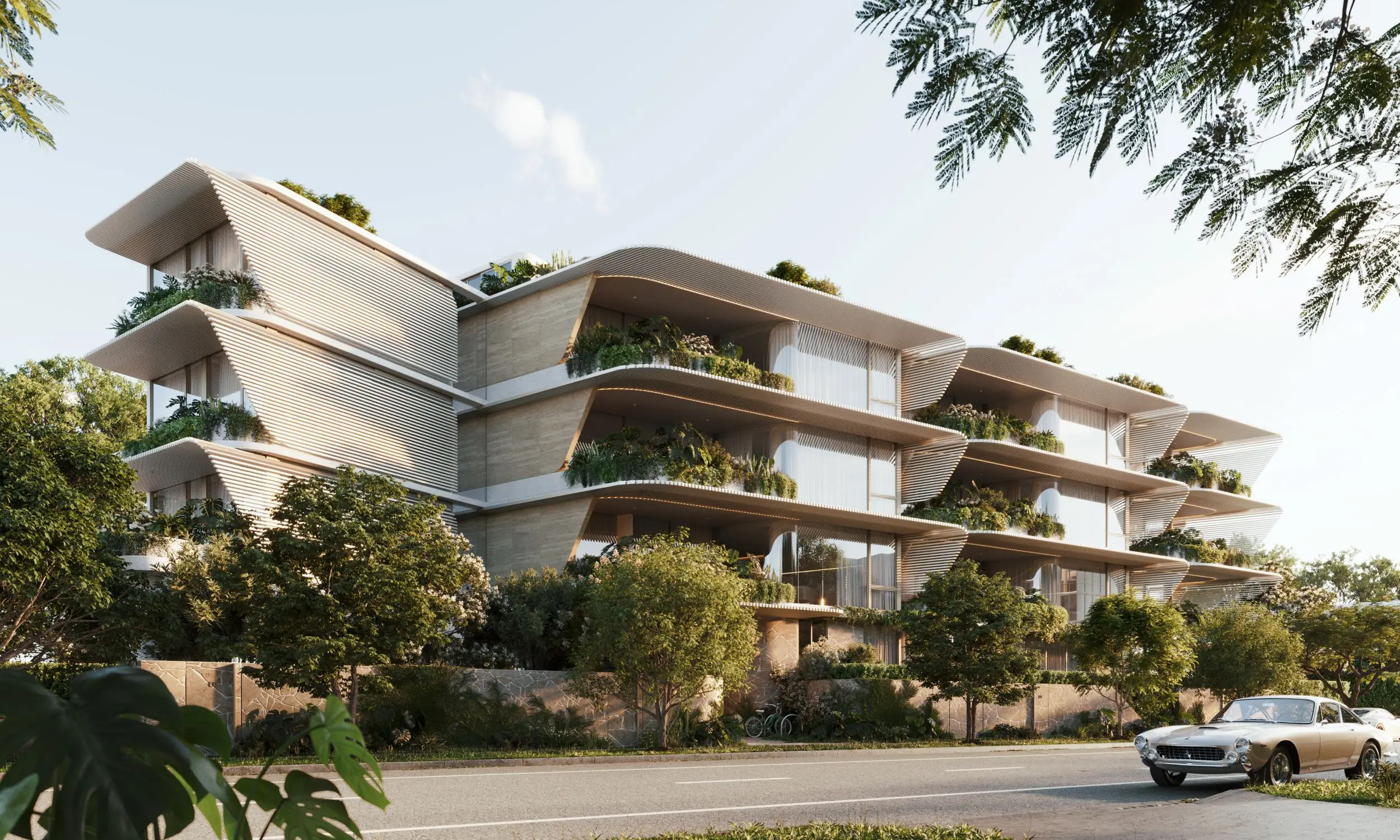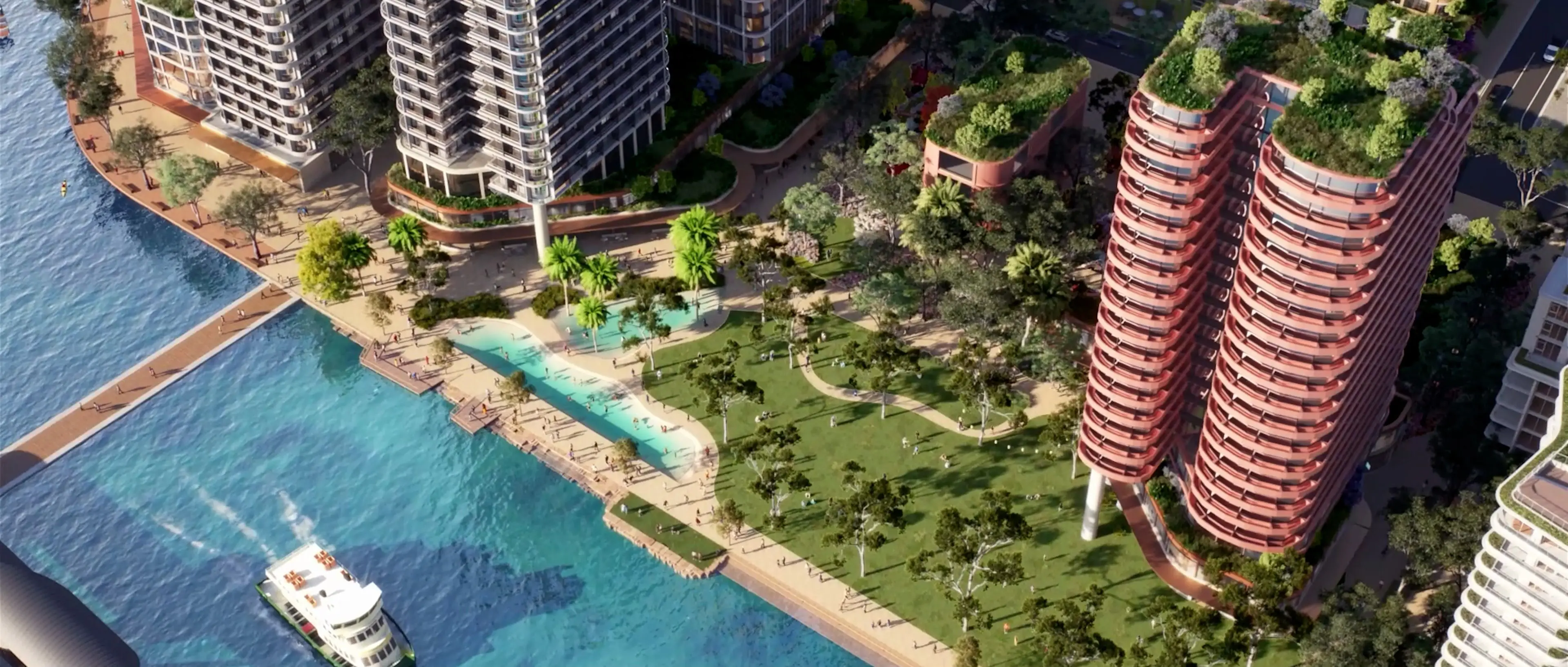
Looking for a new home is an exciting time – whether you’re visiting display homes; attending open-for-inspection appointments at existing properties; or perusing plans for townhomes or apartments in developments yet to be built.
Homebuyers who opt for this third preference are buying what’s called ‘off-the-plan.’ This is exactly how it sounds: they’re buying a new residence off a floor plan – a residence that's either under construction or yet to commence construction.
So, what does buying off-the-plan mean, how does it work, and why do people do it? Let’s break it down.
What exactly is off-the-plan?
Instead of inspecting a ready-to-move-in home, buying off-the-plan means choosing a property from floorplans, digital videos and images, and brochures. It’s like buying a car before it rolls off the assembly line – you’re trusting the blueprint and the manufacturer (in this case, the developer) to deliver your brand-new, shiny product you haven’t yet seen.
Off-the-plan properties are apartments and penthouses in new, multi-unit residential developments, often in or near cities – or townhouses, often in new housing estates – where construction hasn’t started or is in progress.
Developers sell these properties early before construction begins to help fund the project. You, the buyer, benefit by locking in a price before the property is finished.
One of the upsides of buying off-the-plan is you won’t have to take out a mortgage until the property is ready. This gives you time to organise your finances while the builder does the heavy lifting.
How does it work?
Buying off the plan is a pretty seamless process. We've broken it down for you:
- Find the Right Property: Developers launch an apartment or townhouse project, releasing level plans and floor plans; computer-generated digital images/videos of the building and individual dwellings; fixtures, fittings, and colour boards; location maps showing nearby amenities – and often even virtual tours – to show what the property will look like. You choose your ideal home or investment from this material.
- Pay a Deposit: When buying off-the-plan, you usually pay around 5-10% of the purchase price upfront to secure the property. For example, if the price is $500,000, you may only need to pay a $50,000 deposit. In some cases, the developer might allow you to secure your purchase using a deposit guarantee from your bank, meaning you could keep earning interest on your money while your home is being built. Just make sure you check this with your developer from the outset.
- Construction Begins: Once the developer gives the builders the green light, they get to work. The overall construction time depends on the complexities of the development, so it’s always a good idea to find out from your developer when the estimated completion date of your new home will be. The upside is that, while your new home is under construction, you usually don’t need to make additional payments.
- Final Settlement: Once construction is complete, you’ll be invited to inspect your property with a member of the construction team to ensure everything is as it should be, and then you’ll pay the remaining balance. Then, it’s up to you! You can either move in or rent it out if you bought it as an investment.

How is off-the-plan different?
One of the differences between buying an existing property and buying one off-the-plan is timing. With a traditional property purchase, you can walk through a home, test the light switches, and figure out where you’ll put the TV and the couch. When buying off-the-plan, you’re relying on the developer’s construction timeline. It’s a little like ordering a pizza – you know what toppings you picked, but you don’t get to enjoy the finished product until it’s delivered.
Another key difference is the payment structure. Instead of paying the full amount upfront or taking out a mortgage immediately, you pay a small deposit and settle later when the property is ready. This can be a big advantage for buyers who need time to save, and can also work in your favour if the property increases in value during construction. Remember: you’ve already locked in the price of your off-the-plan property, so if it does increase in value, that’s icing on the cake for you. You could see instant equity the day you move in.
There are also potential savings on stamp duty costs given you’re buying a brand new property, depending on which state or territory you live in and depending on if you’re buying a home in which to live or an investment property. Make sure you check with your conveyancer or solicitor if stamp duty exemptions apply to you.
Why buy off-the-plan?
Why do people choose to buy off-the-plan when they can buy a home that’s already built? Here are some benefits:
- Lock in Today’s Price: One of the biggest perks is the ability to secure a property at today’s market price, even if it won’t be completed for a few years. If property prices rise in the meantime, you’ve already locked in a deal. For example, if you buy for $500,000 and the market value jumps to $550,000 by the time it’s finished, you’ve effectively made $50,000 on paper.
- Time to Save: Because you only pay a deposit upfront, you have extra time up your sleeve to organise your finances – to save more money or sell your current home – before paying the balance upon construction completion.
- Brand New Property: Buying off-the-plan means you’re getting a brand-new home, one that is truly yours from top to bottom that you haven’t inherited from the previous owner. You’ll enjoy modern designs, brand-new fixtures and fittings, energy-efficient features, and the latest appliances. Plus, unlike buying an existing property, new builds come with warranties, giving you extra peace of mind.
- Customisation Options: Some developers give you the option of customising aspects of the property, like choosing different colour schemes, fixtures and fittings, or appliances. This gives you the chance to add your personal touch without the need for renovation.
- Government Incentives: In some cases, buying off-the-plan can come with perks like stamp duty concessions or government grants, especially if you’re a first-home buyer, potentially saving you thousands of dollars. These incentives differ from state to state, so be sure to check government websites or with your conveyancer to see what incentives apply to you.
A few things to keep in mind.
While buying off-the-plan has plenty of benefits, there are some things you need to keep in mind, as with all big-ticket purchases. For example, property prices could fall during the construction phase instead of rising, meaning your completed home might fall below the original valuation. Or, the project might face delays. That’s why it’s important to:
- Research the project team and ensure they have a solid reputation – AKA the developer, architect, interior designer, and landscape architect
If the builder has been appointed, research who they are, their history, and what projects they have delivered – you want to make sure your property is delivered on time and to your standard - Consider getting a solicitor to check your contract so you know exactly what’s included and what happens if things go off track
- Keep a close eye on your finances to ensure you can settle when the property is ready
Is off-the-plan right for you?
Buying off-the-plan can be an excellent opportunity. Whether you’re a first-home buyer looking to get a foot on the property ladder; an investor seeking growth potential; or someone wanting to downsize or rightsize into a modern, low-maintenance home, this approach offers real advantages.
Buying off-the-plan is absolutely worth considering. With a bit of research, the right developer, and a good understanding of the process, you could find yourself ahead of the game. After all, the best rewards come to those who plan for the future.
If you’re in the market for an off-the-plan apartment or townhouse, a-d.com.au is the place for off-the-plan. Find your new property here!


